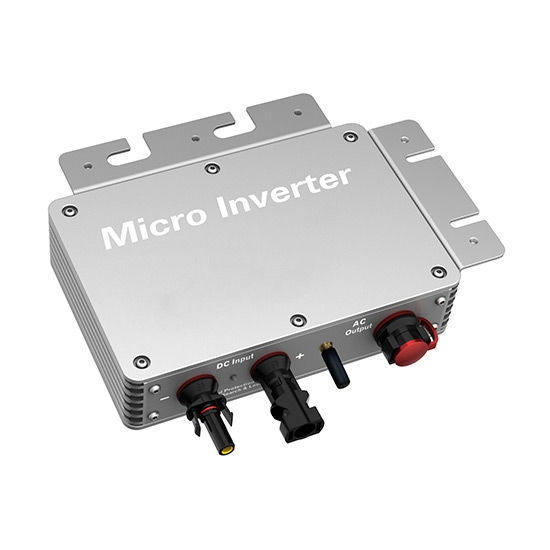The micro grid inverter is a small plug and play device which is usually connected to one solar panel/module to convert DC to AC electricity, and that is its mainly difference from other solar string and central inverters which can be connected to multiple solar panels. In addition, the output from several micro-inverters are always connected together to electrically feed one electrical grid panel.
Early Developments in Solar Inverters
The journey of solar inverters began in the 1950s and 1960s, coinciding with the development of the first solar cells. The initial inverters were basic and inefficient, suitable only for small-scale applications. However, as solar technology progressed, so did the need for more efficient and reliable inverters.
In the 1980s and 1990s, string inverters became the standard for residential and commercial solar installations. These solar photovoltaic inverter connect a series of solar panels into a single string, converting the DC power from all panels into AC power. While string inverters represented a significant leap forward, they had several limitations. For instance, the performance of the entire string could be affected by shading or malfunction of a single panel, and the system design was less flexible.
As time goes on, after the year of 2010 multiple micro inverters brands have entered the global market with less prices, but it is still low market share, because it still more expensive than conventional staring and central inverters. However, the solar power micro inverters are strongly used in some conditions which we can not use other larger inverters:
- In specific residential locations in where there is over-shadow in different locations for the same site.
- In sites where we need to mount solar panels to face different directions for the same array/site.
Technological Advancements:
Since their introduction, microinverters have undergone significant technological advancements. Early micro inverters had limited power handling capabilities and relatively higher costs compared to string inverters. However, continuous innovation has led to improvements in efficiency, durability, and cost-effectiveness.
- Efficiency and Performance. Modern micro inverters boast conversion efficiencies exceeding 96%, rivaling and often surpassing the performance of string inverters. This high efficiency is achieved through advanced power electronics and control algorithms that optimize the maximum power point tracking (MPPT) for each panel individually.
- Durability and Reliability. The durability of micro inverters has also improved. Early models had concerns about lifespan and reliability, but advancements in materials and thermal management have extended their operational life to match or exceed that of solar panels, often warranting warranties of 25 years or more.
- Cost Reduction. One of the significant barriers to widespread adoption of pv micro inverters was their cost. Over the years, economies of scale, advancements in manufacturing processes, and increased competition have driven down costs. Today, the cost difference between micro inverters and string inverters has narrowed considerably, making micro grid inverters a more attractive option for many installations.
- Integration and Smart Features. The integration of smart features and connectivity has also transformed micro inverters. Modern micro inverters often come with built-in communication capabilities, allowing for real-time monitoring and diagnostics. This connectivity enables users to track the performance of individual panels and identify issues promptly, enhancing system maintenance and performance optimization.
Although the micro inverter is still costly compared to others, but its connection to one solar panel allowing us to tune and isolate the output of each panel, then any solar panel with under performance will not affect other panels around. In that way, the whole solar array will produce approx 5-7% power increase more than it would be in case of the string inverter.
Impact on the Solar Industry:
The adoption of solar micro inverters has had a profound impact on the solar industry. They have democratized solar power by simplifying the installation process and making it more accessible to a broader range of users, from residential to small commercial installations. Micro inverters have also driven innovation in module-level power electronics (MLPE), leading to the development of power optimizers and other technologies that further enhance the performance and flexibility of solar installations. These advancements have contributed to the overall growth and acceptance of solar power as a viable and sustainable energy source.

The evolution of micro grid inverters represents a significant technological advancement in the solar energy industry. From their early development to the sophisticated, efficient, and reliable devices available today, micro inverters have transformed how solar power is harnessed and utilized. Their benefits, including enhanced energy harvest, improved reliability, flexible system design, and safety, have made them a popular choice for a wide range of solar installations.
As technology continues to advance, the future prospects for grid tie micro inverters are bright. Integration with energy storage, advancements in power electronics, enhanced grid integration, and increased adoption in large-scale applications are just a few of the trends that will shape the future of this technology. With these ongoing developments, micro inverters will continue to play a crucial role in the global transition to renewable energy.
